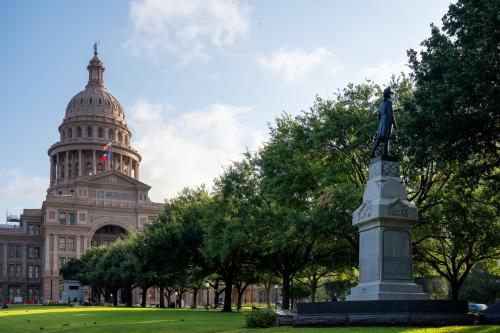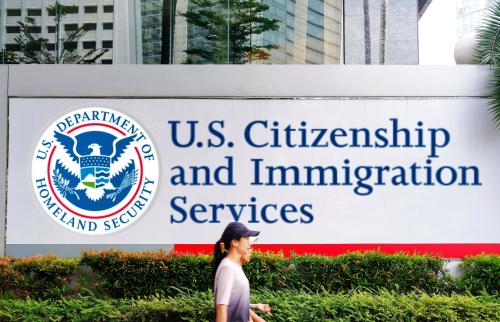Today, the Supreme Court ruled that three of President Obama’s recess appointments to the National Labor Relations Board were unconstitutional. The case centered on appointments made in January 2012. As the case made its way through the federal courts, judges took very different perspectives as to when the recess appointment power can be exercised, what constitutes a recess, and what vacancies are eligible for such appointments.
The case is an important one because it serves as a primary example of the judicial branch checking the executive for having impeded the powers of the legislature—an issue that has had a spotlight shone on it just this week. Below are three takeaways about this case.
1. Winners and Losers in Recess Appointments
President Obama was handed a clear defeat in this case. That is not debatable. However, the impact of the ruling is muted by the fact that the NLRB members have since been confirmed by the U.S. Senate, making the force of this ruling have a larger effect on future recess appointment behavior and not on the appointments made in this case. (However, it should be noted, questions will exist about the validity of NLRB decisions during the period between members’ recess appointments and confirmations.)
Yet all was not lost for the President. Some arguments in the case, including lower court rulings and the perspective of the minority of the Supreme Court, would have offered a much bolder curtailing of the recess appointments power. Some argued that recess appointments can only occur when a vacancy arises during a recess, and must also be filled, then, during a recess. The Court restrained that perspective.
Justice Breyer, writing for the Court, notes, “Does that phrase refer only to vacancies that first come into existence during a recess, or does it also include vacancies that arise prior to a recess but continue to exist during the recess? We conclude that the Clause applies to both kinds of vacancy.” (1)
The Court also defines the way in which a “pro forma session” limits the ability of the President to make recess appointments. Again, Justice Breyer, writing for the Court, explains, “In our view, however, the pro forma sessions count as sessions, not as periods of recess…the Senate is in session when it says it is, provided that, under its own rules, it retains the capacity to transact Senate business. The Senate met that standard here.” (34)
From a broader perspective, the executive branch has parts of this opinion to applaud, even while its power was curtailed. In fact, a reading of Justice Scalia’s concurring opinion (concurring in judgment, but taking a starkly different view) would have dramatically curtailed the recess appointment power of the president, while largely expanding the ability of the Senate to use procedural hand-waving to slow the appointments process. Justice Breyer’s opinion for the Court is a blow for President Obama, but in the world where Justice Scalia’s opinion is the alternative, Noel Canning can be seen as a partial win for President Obama and his successors.
2. Checks and Balances at Their Finest
Beyond the precise decision in this case, Noel Canning highlights an important and remarkable aspect in our system of government. The case shows us the process of checks and balances is working, even in a time when critics of President Obama, the Congress, and even the judiciary lament that the system has gone awry and the Constitution is being shredded.
Today, the highest court in the United States told the President that he exercised power in a way that crossed the lines of the separation of powers. The issue of Senate recesses and the validity of recess appointments was an open one in the practice of government and in the world of legal philosophy, and today the Court clarified the issue. The result, of course, will be a President, who even in the face of being disappointed by the ruling, accepts it as the standard and will use the case to inform his future exercises of the recess appointment power—and so will future presidents.
While it seems like a lofty statement, Noel Canning serves the purpose of showing an often skeptical and cynical American public that checks and balances constrain the branches and the often dysfunctional U.S. government still has the capacity to work and work well.
3. What this Means for Speaker Boehner’s Lawsuit
This week Speaker Boehner announced he would sue the President over his use of executive actions. There is no doubt the Noel Canning case will serve as additional fodder—and surely talking points—for Republicans claiming the lawsuit is the righteous path. The narrative will go something like this: “the Court today said the President has overstepped his powers, and we need to force this issue in all areas the President has done this.” However, the ruling today was not all positive for the Speaker’s prospects.
Yes, the Court slapped down the President’s goal of redefining what a Senate recess meant in order to unilaterally (and temporarily) seat officers of the United States. It is a reflection of this Court’s willingness to rule decisively on the boundaries of presidential power vis-à-vis the power of the Congress—and that would seem to favor the Speaker’s efforts. However, the Court’s logic in the case can be troubling for the Speaker’s efforts to limit presidential power.
In his opinion for the Court, Justice Breyer relies on the history of exercises of presidential power as a basis for understanding their boundaries. Breyer uses McCulloch v. Maryland (1819) and its progeny to say that presidential power in practice is an important aspect of understanding the Constitution and constitutional interpretation (a position that is at odds with Justice Scalia’s view, which he ably displays in his concurrence.) Justice Breyer notes, “Second, in interpreting the Clause, the Court puts significant weight upon historical practice. The longstanding ‘practice of the government,’…can inform this Court’s determination of “what the law is” in a separation-of- powers case.” (syllabus p. 2; discussing opinion at 7)
This treatment, and the broader effort of the Court to use the practice of recess appointments to inform the decision may spell trouble for the Speaker. In areas in which the Constitution is cloudy and statute is unclear, courts, in dealing with a lawsuit against the president, may be quite comfortable looking not at legislative history, but at presidential history as a means of interpreting separation of powers questions. And as Justice Breyer discusses, there are 200 years of Supreme Court precedent to allow such an approach. It is not to say that courts will uphold all of President Obama’s executive actions, but it does suggest that presidents who act in ways similar to their predecessors may be in a better position to win.
The Brookings Institution is committed to quality, independence, and impact.
We are supported by a diverse array of funders. In line with our values and policies, each Brookings publication represents the sole views of its author(s).




Commentary
Three Takeaways from Noel Canning & Recess Appointments
June 26, 2014